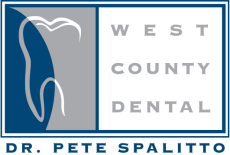-
A Different View on Dental Xrays
So, I’m sure everyone has heard the stories and read the articles claiming that dental x-rays increase the chance of brain tumors. These articles are telling people that studies have found that annual bitewings, frequent panorex films, and radiographic exposure at a young age all increase a person’s chance of developing meningiomas . The problem is people are reading the headlines and not the details.
A lot of these studies were based on people who have had high exposures to radiation, such as survivors of atomic bombs. As far as the relativity of exposure to dental radiation, the studies were done when higher dose x-ray methods were used. According to Wikipedia, no recent studies have examined associations between dental x-rays and meningioma during the era when radiation doses for conventional x-rays have decreased and newer imaging techniques, such as computed tomography, have been introduced. Here are some comparisons to show just how little radiation is received from current methods of dental radiography:
Some people may ask if dental x-rays are absolutely necessary, and the answer is ABSOLUTELY YES! Although many dentists, such as myself, keep up on today’s quickly advancing technology by using things such as intraoral cameras, lasers, and magnification glasses, we are still unable to see through teeth, gums, and bone. For this reason, x-rays are needed to properly diagnose and treat issues of the mouth. With the proper use of dental x-rays, issues such as cavities, infections, lesions, developmental issues and many others can be detected and treated at an early stage and also help to save time, money, and unnecessary discomfort. Radiographs may be required while a woman is pregnant in order to keep the mother and the fetus healthy, and as long as the mother is properly protected with a lead apron, she and her baby will be just fine. Keep in mind that everyone has different needs when it comes to frequency of dental x-rays, and your dentist will more than likely weigh the benefits and the risks before taking unnecessary radiographs.
Leaded aprons and thyroid shields that contain lead or other materials are patient-protective equipment that minimize exposure to scattered radiation. If all of the NCRP recommendations are followed rigorously, the use of a leaded apron on patients is not required. (National Council for Radiation Protection & Measurements. Radiation protection in dentistry. Bethesda, Md.: National Council for Radiation Protection & Measurements; 2003.) However, if any of the recommendations is not implemented, then a leaded apron should be used.
Really, dental x-rays should not be feared or refused, but rather looked upon as a great form of technology that can help to properly detect and treat dental issues and concerns. If you have any question about dental radiographs, feel free to ask your dentist about them.
RECENT POSTS
categories
- Uncategorized
- crowns
- dental veneers
- dentists
- full service dental practice
- porcelain veneers
- same day crowns
- Dental Cosmetic Surgery
- Dental Implants
- Dentistry
- Dentist Review
- Laser Dentistry
- Root Canal
- Sedation Dentistry
- Dentures
- Cleanings
- Teeth Whitening
- Abscessed Teeth
- Cosmetic Dentistry
- Infographic
- Cavities
- Sealants
- Gum Recession
- Periodontal Disease
- Dental Health
- Family Dentistry
- Dental Emergency
- Invisalign
- Filling
- Same Day Dental Procedures
- Gum disease
- Sleep Apnea
Archives
2022
2021
- December (2)
- November (1)
- October (3)
- September (2)
- August (2)
- July (2)
- June (2)
- May (2)
- April (2)
- March (2)
- January (2)
2020
2016
2015
- December (4)
- November (3)
- October (3)
- September (4)
- August (4)
- July (4)
- June (4)
- May (3)
- April (3)
- March (4)
- February (5)
- January (6)

